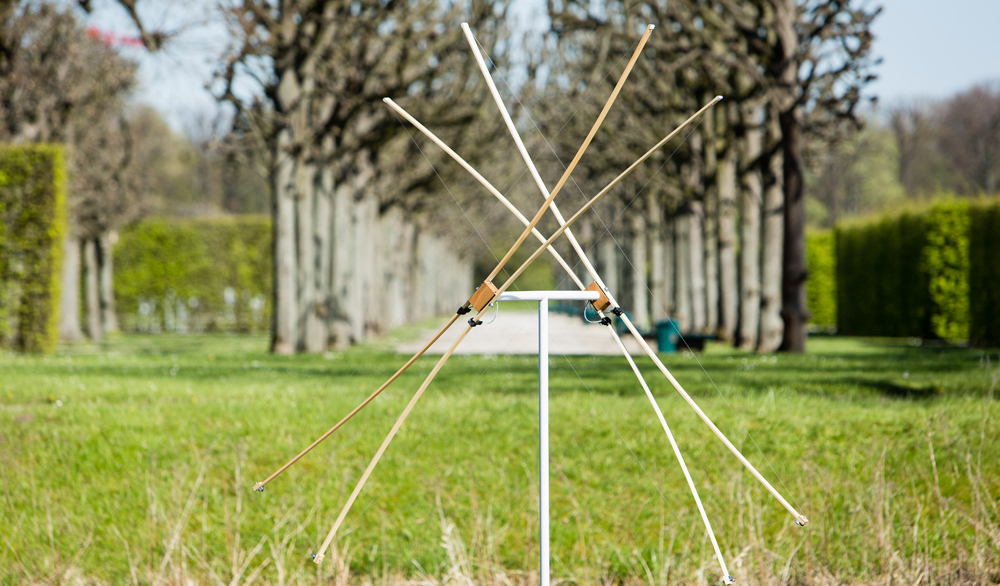Windklänge
Max Eastley
After their rediscovery in the late 18th century, aeolian harps became a regular feature of parks and gardens, above all in England and Germany. The instruments, with their ‘ghostly’, ethereal sounds that arise without human intervention, were seen for a long time as symbolic of the music of nature. The British artist Max Eastly discovered the aeolian harp in the early 1970s. He was less fascinated with their symbolic meaning, however, than with the idea of using wind as a natural force to link kinetic art, music and musical instruments. Since then he has experiment in a series of works with the energetic powers of wind, water or electricity. His Windklänge [Wind Sounds], on three islands floating on the western moat, are arc-shaped wind harps – four on each island – whose design is partly determined by the forms and colours of the plants in the garden. They consist of narrow, two-metre-long strips of wood, over which gut strings are stretched. The strings respond remarkably sensitively to movements of the air. Different string tensions result in various pitches and tone colours. Even a light gust of wind brings about sounds. In order to present their fine nuances, the sounds are lightly amplified and rendered through loudspeakers on the islands. Strong winds give rise to sharp, metallic, even percussive sounds, while during calmer weather the harps break out in melodic cantilenas, which seem to hover over the water.
Max Eastley, born 1944 in Torquay (England), lives in London. Eastley studied painting and graphic art at the Newton Abbot Art School, and art at Middlesex University London. His sound sculptures, objects and installations link kinetic art and sound art. But his work also includes compositions, soundscapes, dance pieces and performances. From 2010 to 2013 he was involved in an artistic research project on aeolian phenomena at the Oxford Brookes University.







